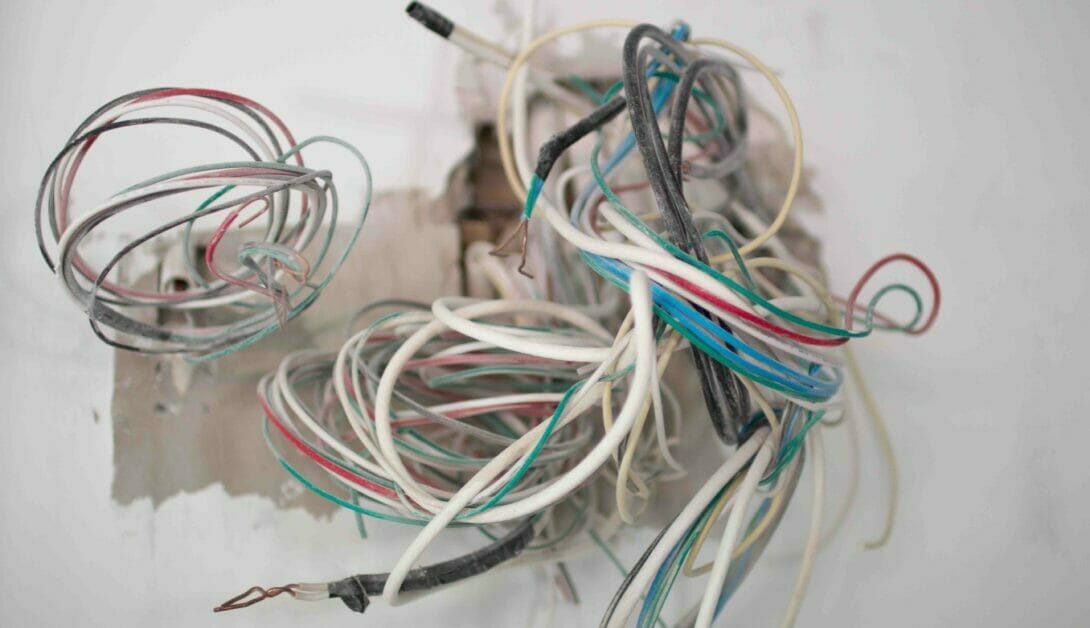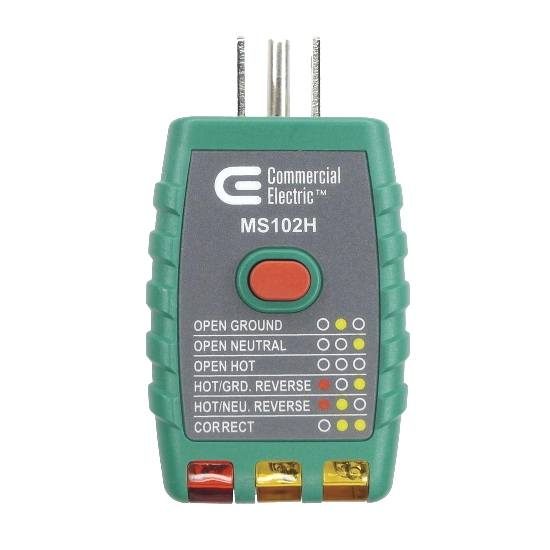How to Fix a Hot Neutral Wire (3 Steps & Safety Precautions)

Although a neutral wire differs from a hot one, it can sometimes become hot, which can be dangerous.
Common causes of a hot neutral are wrong wiring, missing neutral, long run, and open neutral. Fix these problems by ensuring you are wired correctly, providing a neutral wire if missing, minimizing the wiring length, and replacing a broken neutral wire that causes an open neutral after confirming with a continuity test.
I will explain the causes and also show how to fix them below.
Causes of a Hot Neutral
The neutral wire, usually white or gray, should never be hot or live while an appliance is not used.
It’s there to provide a safe return path for the current. Whereas electricity flows to an appliance through the hot wire to power it, it returns to the panel through the neutral wire.
I’ve listed some possible causes of a neutral wire becoming hot below (when it shouldn’t be). You should investigate your particular situation and deal with the problem accordingly.
It’s important that you do so because people don’t expect the neutral to be hot all the time, and it can be dangerous.
Common Causes
The neutral wire may be hot because it is wired wrongly due to low resistance contact, or it’s an open neutral.
I will further show how to fix these and other similar situations. First, ensure you’ve not taken a reading wrongly or misidentified the neutral wire.
Testing (Wrong Reading)
Note that a multimeter will read 120/240V across two separate neutral terminals when under a load. That’s because they’re in use, but you should never test like this anyway.
Misidentification (It’s Not Hot After All)
In some setups, the neutral wire is blue or gray, but blue and gray are also used for a hot wire, so the two can easily be confused.
You must recognize the scheme instead of assuming the blue or gray wire is neutral (or hot). Blue or gray wire will (and should) never be used for neutral and hot in the same scheme, as they must be distinguished.
The hot, neutral, and ground wires are usually colored as follows (US schemes), where the first color in the list is the most common:
- Hot: black, red (3-phase), brown, gray, blue, yellow
- Neutral: white, gray, blue, black (non-US)
- Ground: bare copper, green, yellow
So, be sure you have a situation where the neutral is hot before fixing it. Otherwise, you may assume it is meant to be hot, especially if it’s blue or gray and not neutral.
Watch this video if you’re still unsure which wire is the neutral one:
Fixing a Hot Neutral
Wrong Wiring
It will become hot if you mistakenly attach the neutral (usually white) wire to a hot terminal. This could be a dangerous situation.
Solution: Recheck the wiring scheme and your wiring.
Missing Neutral
If you have a hot wire somewhere in your home that doesn’t have an accompanying neutral one, and you have neutral wires tied together elsewhere, this can cause the current to use one of those neutrals instead.
Solution: Locate the missing neutral and provide a neutral wire at that point.
Low Resistance (or Long Run)
Copper wire is normally used and preferred (over aluminum and others) in wiring because it is a good conductor with low resistance.
However, the resistance of all the wires will increase if you have a long cable run. Also, if you come into contact with the neutral conductor, e.g., after a shower, you may get a shock due to having an even lower resistance.
Solution: In the former case (long cable run), try to minimize the length, and in the latter case (accidental contact), you shouldn’t have naked wires or touch them in such situations.
Open Neutral
A break in the neutral wire is dangerous because it energizes the appliance and can cause a fire. A reading may show the neutral is hot. It is a similar situation to a missing neutral.
Solution: Conduct a continuity test on the neutral wire to check whether it’s broken along the line. Replace the neutral wire if it is broken.
Fixing an Open Neutral, Causing it to be Hot
Step 1: Check the Voltage
If there’s an open neutral, the voltage will be less than 1101-120V, so check using a multimeter.

The above test shows a low voltage reading (103.6V), so we shall proceed.
Step 2: Do a Continuity Test
Do a continuity test at two points along the suspect neutral wire or line in the same circuit to identify the problem spot.


You can also use an outlet tester like the one shown below. The second indicator (off, off, yellow) indicates an open neutral.

Step 3: Replace the Wire
Once you’ve identified the broken neutral wire causing the open neutral, replace it.
FAQs on Hot Neutral Wires: Breaking it Down!
1. So, what’s the deal with the neutral wire? (Seinfeld Voice)
The neutral wire’s main gig offers a safe return path for the current after it’s done its thing, powering up your appliances. It makes sure electricity keeps on flowing nicely and smoothly.
2. Should I be worried if my neutral wire gets hot?
Absolutely. A hot, neutral wire isn’t something you want. It’s like leaving your oven on all night; it’s just asking for trouble. You could get a nasty shock, or worse, it could start a fire.
3. What color should I be looking for if I’m trying to spot the neutral wire?
Over here in the U.S., the neutral wire is usually white or gray. But remember, other countries might have their own color thing going on, so always double-check.
4. I think my neutral wire is hot! What now?
First thing? Power off! Like, right now. Then, call up your local electrician. Regarding your home’s electrics, it’s always best to play it safe.
5. Can I use one of those multimeter thingamajigs to check if my neutral wire’s hot?
You bet! A multimeter is like a detective for your wires. But always remember to be careful, and it’s a good idea to power down before you start poking around.
6. How does a neutral wire end up playing the hot role?
Sometimes, wires want to switch things up! No, just kidding. Usually, it’s because of some mix-up during wiring. If the neutral wire – typically our white buddy – gets connected to a hot terminal, it goes live.
7. How can I ensure my neutral wire stays cool and collected?
Check-in on your home’s wiring once in a while. If something looks off, like wear and tear, it’s time to call in the pros. And when in doubt? Always get a second opinion.
8. Are there any tell-tale signs that my neutral wire might be hot?
You won’t see the wire break a sweat, but if its surrounding insulation starts to look like it’s had too much sun – think melting or discoloration – it’s a big red flag.
9. Why do folks prefer copper wire instead of aluminum?
Copper’s the popular kid in school when it comes to conducting. It’s got this low-resistance thing going on, which helps it keep things safe, especially when you’ve got long wire runs.
10. Broken neutral, missing neutral… What’s the difference?
A broken neutral’s like a snapped guitar string; it’s damaged along its stretch. On the other hand, a missing neutral is, like… well, a missing guitar string. Both will mess up your tune and can heat things. Not in a good way.
References
Website References:
GFCI tester. https://www.homedepot.com/p/Commercial-Electric-Outlet-Tester-with-GFCI-OTG-102R/206029151
Video References:
Apartment Maintenance Pro
One Hour Smart Home
